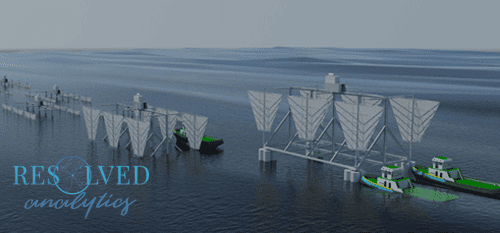Removing Bottlenecks with Rescale: Customer Interview with Resolved Analytics
We sat down with customer Stewart Bible, co-founder of boutique engineering consulting firm Resolved Analytics, to talk about how his company uses Rescale, their motivation for computing on the cloud, and their plans for the future. Read the conversation below to hear how they’re using Rescale to remove computational bottlenecks and expand their client-serving abilities.

Q: Can you start by introducing yourself, your company, and your line of business?
A: My name is Stewart Bible and I’m one of the co-founders and a principal engineer at Resolved Analytics. We’re a boutique computational engineering and optimization consultant firm where we help customers improve product and process performance with CFD, finite element analysis, and other dynamical simulation tools.
Q: Can you describe your simulation needs and your computing environment before you started using Rescale?
A: Our simulation needs fluctuate depending on the number of customers that we have at any one time and the computational demands that the customers’ problems require. That’s why we find the cloud particularly interesting and useful: because one month we may need 64 processors to run two big problems or 128 processors to run a few big problems, and then the next month we have very low requirements. Owning a stand-alone software license capable of handling the highest workloads doesn’t make a whole lot of sense during those months when you only need 8 or 16 processors because it ends up being a stranded asset. Our internal capability before Rescale was 16 processors.
Q: You kind of touched on this, but can you describe the pain points that led you to consider Rescale?
A: We ran the cost analysis on last year’s compute requirements and projected 2017 compute requirements. If you add up all the licensing costs for executing those jobs solely internally versus some internally and some in the cloud, it makes economic sense for us to run in the cloud. Plus, 16 processors just doesn’t get a complex multi-physics problems done very quickly. You need 64 or 128 processors.
Q: How do you use Rescale today?
A: So far we’ve used STAR-CCM+, and we found it very convenient. I was surprised at the ease of setup and how easy it was to get going. In the future, we plan to explore the new ANSYS partnership and probably a lot more open software like OpenFOAM.
We don’t have a typical workload. It varies a lot. We’re a small company. We’re only three people, so sometimes it’s very busy with four or five customer projects and we might have three or four simulations running at a time. We can run some of it internally, but then we run into the issue where all our licenses and processors are taken up and we need to run something in the cloud. The cloud knocks off the peaks of the demand for us. We’re using it for overflow and big jobs that we can’t run here.
Q: How has using Rescale changed the way that you approach simulation overall?
A: I think 2017 is going to bring some changes. What I see potentially happening in 2017 is that we reserve our 8 or 16 cores here to run the hard problems that require STAR-CCM+ and we run some of our more basic CFD analysis (for example, external aerodynamics) on OpenFOAM on Rescale resources. Another thing I see happening is that we used to be very conservative or picky about how many processors we would run a problem on because we might have three or four problems going and no one job was more important than the other three clients’ jobs so we would partition those equally. It’s always a pain in the butt to have to run on fewer processors than you’d want. Now that we have access to as many processors as we want, we’re just going to throw a lot of processors at jobs and get them done so much more quickly, and we’ll be able to run many more iterations on trials and optimization because we’re doing it that way. It’s taken the high capital requirements out of being able to run things on a lot of processors.
Q: It sounds like what’s really important to you is the ability to scale out and to have elastic resources available to you, but is there anything else that you really like about Rescale?
A: Versus the other simulation platforms, I found that Rescale was amongst the easiest to use.
Q: How do you expect your use of Rescale to impact your business?
A: It’s definitely going to allow us to have and to advertise greater capabilities, and it’s also going to allow us to have a better bottom line and cost savings. I see Rescale or any other cloud provider being a long-term part of our business. Cloud computing allows us to cost-effectively execute the most complex simulations, and we’ll be able to help more clients because we have access to supercomputing resources.
